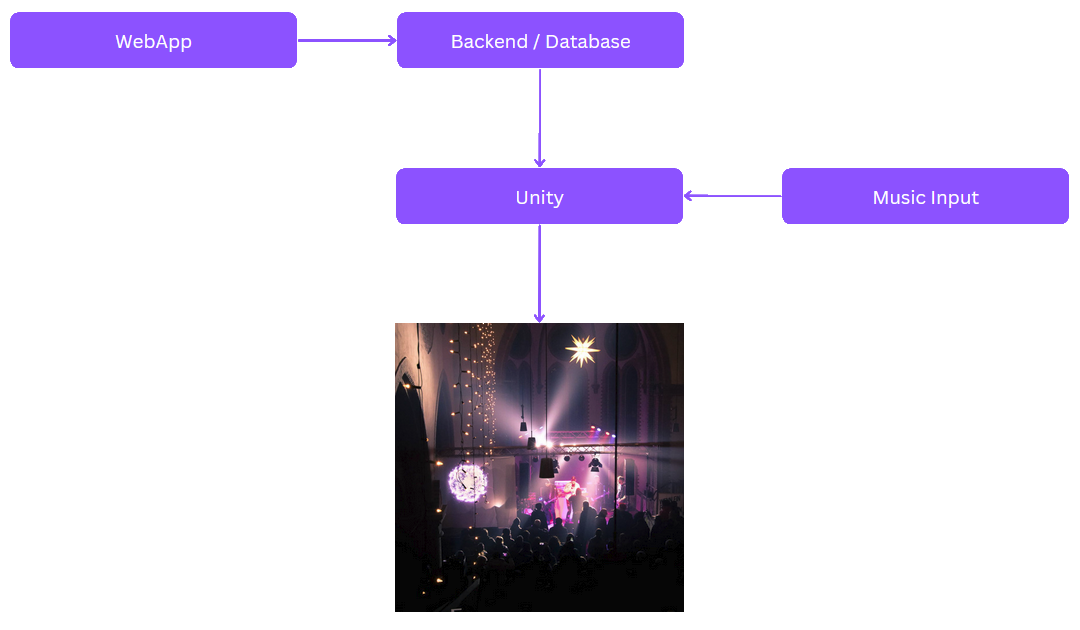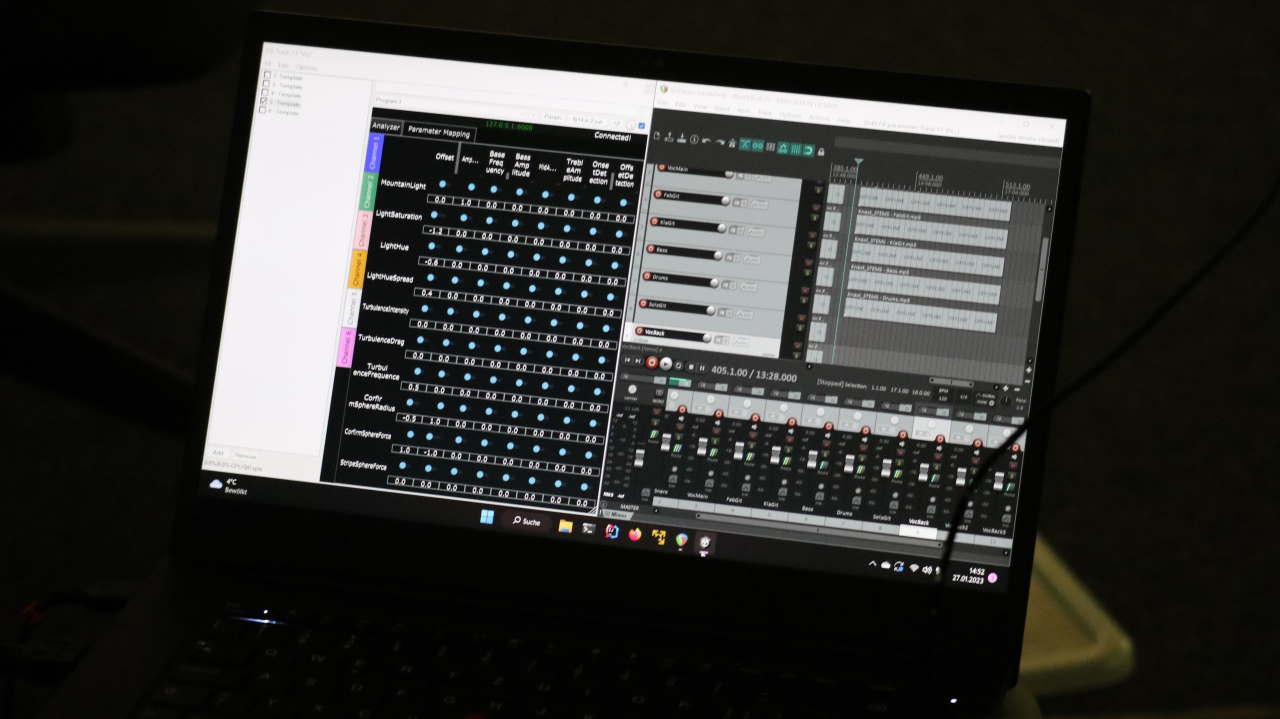The project basically consists of 4 components: A web app that allows the audience to submit drawings to the concert songs, a backend that manages the data and makes the different services publicly available, an audio analysis program to evaluate live music input data and finally the Unity application that visualizes the live music data and the audience drawings.




